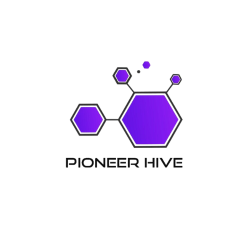Analytics and Reporting
Gain valuable insights into your marketing efforts with our robust analytics and reporting services. We track key performance metrics, provide data visualization, and offer data-driven recommendations for optimization.

Analytics and Reporting play a crucial role in modern digital marketing, providing businesses with valuable insights into the performance of their marketing efforts. Analytics involves the collection, measurement, and analysis of data from various marketing channels and touchpoints. Reporting, on the other hand, involves presenting this data in a meaningful and actionable format, allowing businesses to make data-driven decisions and optimize their strategies. Here’s a more detailed overview of Analytics and Reporting:
1. Data Collection and Integration: Analytics begins with the integration of data from various sources, such as websites, social media platforms, email marketing tools, paid advertising platforms, and more. Data is collected through tracking codes, pixels, cookies, and APIs to gather information on user interactions and behavior.
2. Performance Tracking and Key Metrics: Analytics tracks key performance metrics relevant to your business objectives. These may include website traffic, conversion rates, click-through rates (CTR), bounce rates, time on site, email open rates, social media engagement, and more. By monitoring these metrics, businesses gain insights into the effectiveness of their marketing campaigns.
3. Data Visualization: Data visualization transforms raw data into easy-to-understand and visually appealing formats, such as graphs, charts, and dashboards. Visual representation of data simplifies complex information, making it easier to identify trends, patterns, and areas for improvement.
4. Audience Behavior Insights: Analytics provides valuable insights into user behavior and preferences. Businesses can understand their audience’s demographics, interests, and interactions with marketing content. These insights help tailor marketing strategies to better resonate with the target audience.
5. Campaign Performance Evaluation: Through analytics, businesses can evaluate the performance of their marketing campaigns. Comparing actual results against predefined goals and benchmarks helps identify successful strategies and areas that require optimization.
6. Attribution Modeling: Attribution modeling attributes conversions and sales to the specific marketing channels and touchpoints that influenced the customer journey. This helps businesses understand which channels contribute most effectively to their bottom line and allocate resources accordingly.
7. Competitive Analysis: Analytics can also be used for competitive benchmarking, comparing your performance against industry competitors. This analysis provides insights into your market position and can inform strategies to gain a competitive advantage.
8. Real-Time Data Tracking: With real-time data tracking, businesses can monitor their marketing efforts in real-time. This agility allows for prompt adjustments to campaigns and strategies based on emerging trends or shifts in audience behavior.
9. Performance Reporting: Reporting consolidates the analytics data into regular reports, providing a comprehensive overview of marketing performance. Reports typically include key insights, trends, successes, challenges, and actionable recommendations.
Through Analytics and Reporting, businesses gain a deep understanding of their marketing performance and customer interactions. These insights empower data-driven decision-making, enabling businesses to optimize their marketing strategies for better results. With regular reporting, businesses can track progress, identify areas for improvement, and refine their marketing efforts to achieve greater success in the dynamic digital landscape.
